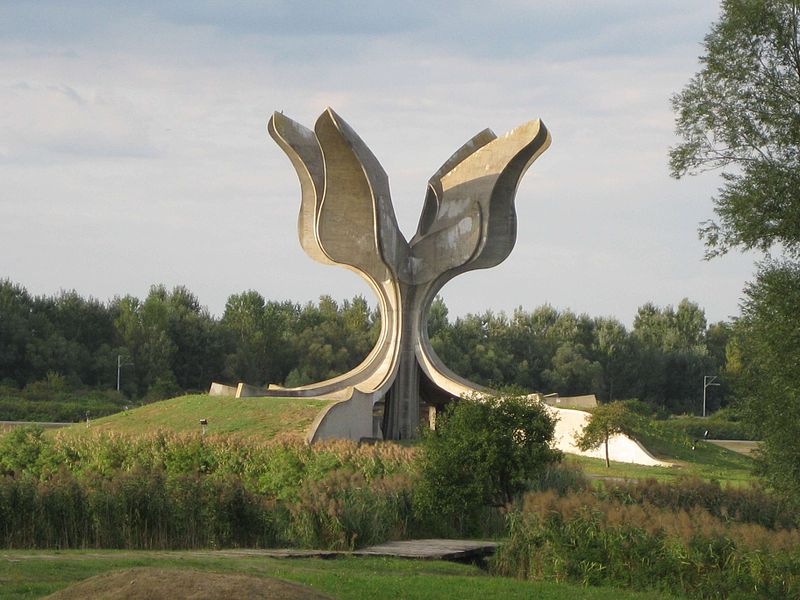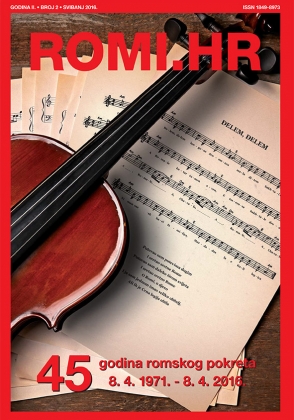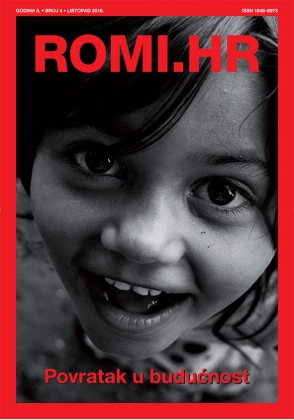Fokus ROMI.HR
/Ala voliv lake kale jakha,
Kaj si gugle sar duj kale drakha.
(I ja sam jednom imao veliku obitelj
Ali ih je Crna legija umorila)
Đelem, Đelem – Romska himna
Prijevod: Melike Sariguel
Unatoč tome što stoljećima žive na Starom kontinentu, povijest Roma gotovo nikada nije prezentirana kroz spomenike, spomeničke cjeline i slična mjesta. Čak se i tragedija kao genocid nad Romima, poznata i kao Porajmos, rijetko predstavlja. Spomenik romskim žrtvama Porajmosa bio bi pravi izraz poštovanja svima koji su umrli ili patili.
Genocid nad Romima koje je počinila Nacistička Njemačka i nezini saveznici tokom Drugog svjetskog rata, prouzročio je smrt stotina tisuća ljudi i globalnu traumu za romsku zajednicu. Priznanje Porajmosa pokazalo se posebno teškim procesom, a ova tragedija i dalje je puno manje poznata od Shoaha. Nedavno je postignut značajan napredak, zahvaljujući aktivistima koji nisu bili dio globalne amnezije u odnosu na genocid nad Romima. Najpoznatiji spomenik u spomen na ove zločine nalazi se u Berlinu. Kancelarka Angela Merkel otvorila je spomen-obilježje Sintima i Romima, žrtvama nacionalsocijalizma 2012. godine u znak sjećanja na sve Rome ubijene tokom ovog genocida, u Njemačkoj i u inozemstvu. Spomen obilježje, koje se nalazi između zgrade Reichstaga i Brandenburških vrata, otvoreno je za posjet svima, pomažući da se ta tragedija ne zaboravi sve dok se spomenik očuva. Postojanje spomen obilježja već je ugroženo, jer je Deutsche Bahn, tvrtka zadužena za javni prijevoz, izradila planove izgradne novih linija podzemne željeznice koja će ići ispod spomenika. Iako su vlasti tvrdile da neće dopustiti ugrožavanje spomenika, ova situacija ilustrira nedostatak obzira i poštovanja mnogih ljudi prema romskoj povijesti.
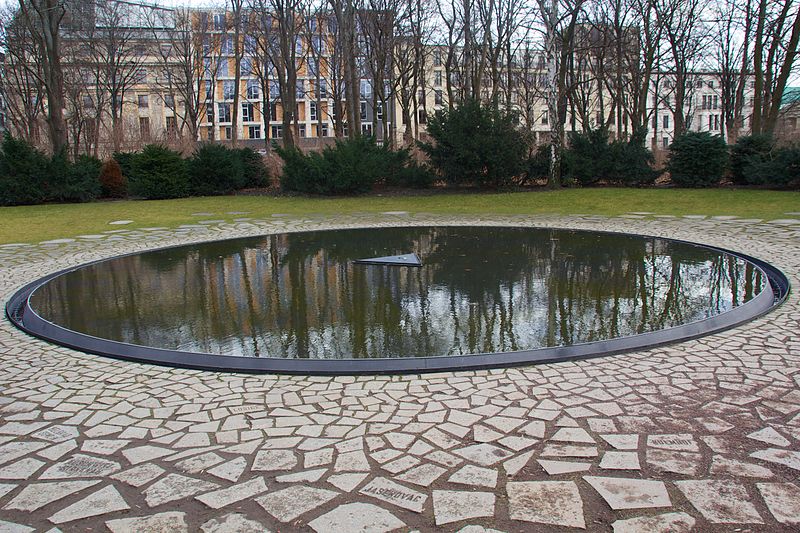
Spomenik u Berlinu se sastoji od kružnog bazena s vodom s kamenjem u obliku trokuta u sredini, što podsjeća na oznaku koju su nosili zatvorenici Romi u nacističkim logorima. Na kamenju oko bazena uklesana su imena glavnih logora za istrebljenje u kojima su stradali i umirali Romi, poput onog u Jasenovcu u Hrvatskoj.
Prema internetskoj stranici Spomenica Jasenovac, u logoru koji je otvorio ustaški režim ubijeno je 83.145 osoba čija imena su poznata, od kojih su 16.173 Romi. Kao i u svakom genocidu, meta je bila cijeli romski narod, uključujući 4.877 Romkinja i 5.608 romske djece koja su ubijena u tom sramotnom logoru. Zakon kojim je uspostavljeno Spomen područje, stvoreno 1968. godine, naveo je slijedeće razloge osnivanja: “kako bi se zauvijek sačuvalo sjećanje na žrtve fašističkog terora i borce Narodnooslobodilačkog rata koji su pali u Drugom svjetskom ratu u logorima Jasenovac i Stara Gradiška, te kako bi se očuvala dostignuća antifašizma.” Kroz ovaj citat lako je vidjeti kako je vlada Jugoslavije stvarala selektivno sjećanje, spominjući partizane, ali zaboravljajući na Srbe, Židove i Rome koji su kao nacionalne zajednice bili suočeni s tim groznim zločinima. Pored Spomen obilježja svim žrtvama Jasenovca, u selu Uštica izgrađen je i poseban muzej posvećen Romima koji je otvoren za posjetitelje u kolovozu 2020. godine. Romsko groblje s 21 masovnom grobnicom okružuje to mjesto, ali na njemu je samo mala spomen-ploče koje svjedoči o užasima Porajmosa u Jasenovcu. Novi muzej predstavlja velik napredak u prikazivanju stvarnosti ovog genocida u Hrvatskoj. Ipak, potrebno je izgraditi odgovarajući spomenik romskim žrtvama.
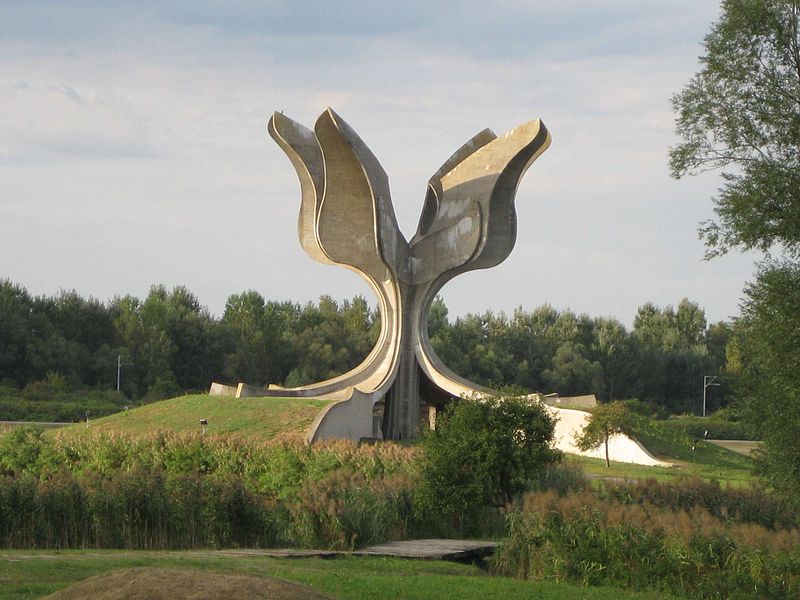
Drugi primjeri mjesta koja obilježavaju Porajmos u Europi uključuju spomenike u Muzeju romske kulture u Bukureštu ili na Muzejskom trgu u Amsterdamu, i bivšem “Zigeunerlagerima“ poput logora Lackenbach (Austrija) i spomen-obilježja za Rome i Sinte u njemu, kao i brojne memorijalne ploče diljem Europe.
Kao i u ostatku svijeta, i u Hrvatskoj je priznavanje Porajmosa dug proces koji traje više od 75 godina nakon završetka Drugog svjetskog rata. Izgradnja spomen-obilježja i muzeja posvećenih genocidu nad Romima potrebna je kako bi se zapamtile posebnosti genocida i odala počast žrtvama. Takva mjesta služe i za komuniciranje i objašnjavanje ovog mračnog poglavlja povijesti i Romima i društvu u cjelini.
U Zagrebu i dalje nedostaje spomen obilježje u znak sjećanja na žrtve ovog genocida. Potrebno je podići spomenik zajednici Roma ubijenih za vrijeme Porajmosa. To mora biti dio općeg priznanja genocida i drugih strašnih zločina koje je počinio ustaški režim tokom ovog razdoblja previranja, stvorivši povjesni ožiljak koji u Hrvatskoj nikada ne smije biti zaboravljen.
Ala voliv lake kale jakha,
Kaj si gugle sar duj kale drakha.
(I once had a large family too
But the Black Legion murdered them)
Djelem, Djelem – Roma Anthem
Despite centuries living on the Old Continent, Roma history is almost never depicted on monuments, memorials, and other sites. Even a tragedy such as the genocide of Roma (also known as the Porajmos) is rarely being represented. A monument to Roma victims of the Porajmos would be a rightful tribute to all of those who died or suffered.
The genocide against Roma, perpetrated by Nazi Germany and their allies during the Second World War, caused the death of hundreds of thousands of people and a global trauma for the community. The recognition of the Porajmos proved to be a particularly difficult process, and this tragedy remains way less known than the Shoah. Significant progress has been achieved recently thanks to activists who did not accept the global amnesia regarding the mass murdering of Roma. The most famous monument commemorating these crimes is located in Berlin. The Memorial to the Sinti and Roma Victims of National Socialism has been opened in 2012 by Chancellor Angela Merkel for the remembrance of all Roma murdered during this ethnic extermination, in Germany and abroad. Located between the Reichstag and the Brandenburg Gate, the Memorial is visible to everyone, ensuring that this tragedy is not forgotten as long as the site is preserved. The existence of the Memorial has already been threatened as the Deutsche Bahn, in charge of public transports, made preliminary plans of a metro line going under the monument. Though the authorities then claimed that they would not allow the monument to be destroyed, this controversy illustrates the lack of consideration and respect of many regarding Roma history.
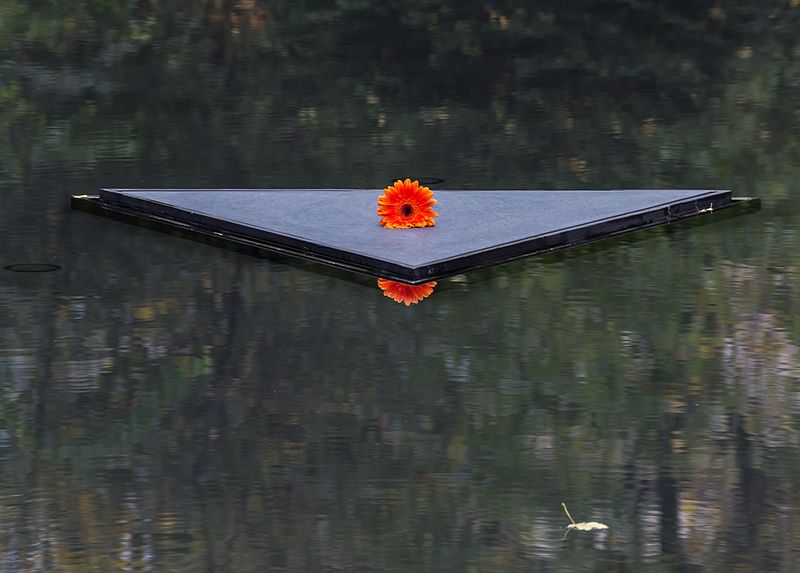
The monument in Berlin itself consists of a circular pool of water with a triangular stone in its middle, reminding of the badge worn by Roma prisoners in Nazi camps. On the stones around the pool, the name of the main extermination camps where Roma people suffered and died are engraved, such as the one in Jasenovac in Croatia.
In the camp opened by the Ustasha regime, according to the Memorial of Jasenovac website, 83 145 people identified by name died, including 16 173 Roma. As in every genocide, the whole Roma population was targeted, as 4877 Roma women and 5608 Roma children died in the shameful camp. The Memorial has been created in 1968 “to preserve in perpetuity the remembrance of the victims of the Fascist terror and the soldiers of the People’s War of Liberation who fell in the Second World War in Jasenovac and Stara Gradiška Camps and in order to preserve the achievements of Anti-Fascism”, according to the law establishing the creation of the site. Looking at this quote, it is easy to see how the government of Yugoslavia created a selective memory, mentioning Partisans but forgetting about Serbs, Jews, and Roma as ethnic groups facing these horrendous crimes. In addition to the Memorial to all victims of Jasenovac, a specific museum dedicated to Roma has been built in the village of Uštica and opened in August 2020. A Roma cemetery with 21 mass graves is surrounding the site, but only small plates are here to testify of the horror of the Porajmos in Jasenovac. This site represents great progress to show the reality of this genocide in Croatia. However, the construction of a proper monument for Roma victims is still needed.

Other examples of sites commemorating the Porajmos in Europe include monuments in the Museum of Roma Culture of Bucharest or on the Museum Square in Amsterdam, former ‘Zigeunerlager’ like the camp of Lackenbach (Austria) and its Memorial for Roma and Sinti, as well as many commemorative plaques all around Europe.
In Croatia, as in the rest of the World, the recognition of the Porajmos has been a long process that is still ongoing more than 75 years after the end of the Second World War. The construction of memorials and museums dedicated to the specific genocide of Roma is necessary in order to remember the specificity of the genocide and honor the memory of victims. Such sites can also be used to communicate and explain this dark chapter of our History to both Roma and the population as a whole.
Zagreb is still missing a memorial to commemorate victims of this genocide. A monument to the Roma community killed during the Porajmos is necessary. This has to be part of a more general recognition of the genocide and other terrible crimes committed by the Ustasha regime during this period of turmoil, a scar of History that should never be forgotten in Croatia.
Galerija slika:
 Povratak na Fokus
Povratak na Fokus

